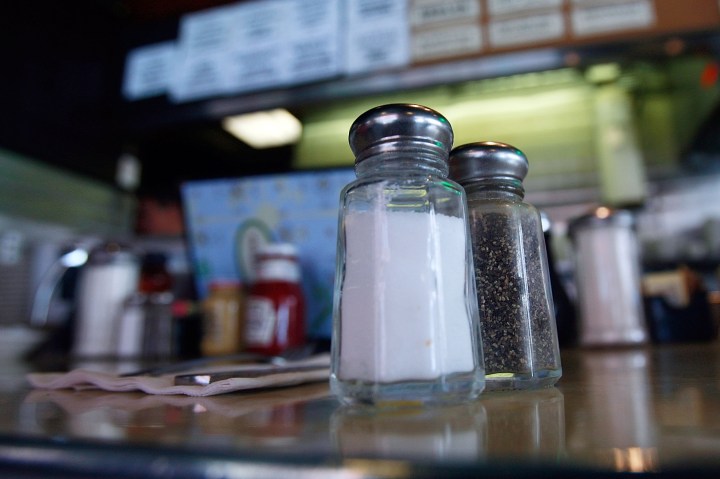
I’ve Always Wondered: How did pepper get married to salt?
I’ve Always Wondered: How did pepper get married to salt?

Salt and pepper shakers are the main show at Shakers American Cafe, a small diner in Orlando.
More than 600 sets are sprinkled around the diner — on shelves, by the cash register and on tables — in the shape of dogs, donuts, alligators and even chunks of Gouda cheese.
Jessica Bowen visited Shakers one recent morning. She reached for just one shaker to season her bacon, egg and cheese croissant.
“The salt will be fine,” she said. “I don’t feel like pepper adds any other flavor to it.”
Bowen is like a lot of people. Salt? Yes, please. Pepper? No, thank you.
Naomi Duguid, a cookbook author, who is working on a book called “Joy of Salt,” says it’s pretty easy to figure out salt’s place in the kitchen and on the table.
“We can’t survive without it,” she said. “And then we also like the taste of it. It enhances flavor.”
Salt, Duguid said, earned a place in cuisine because it started out as a way to preserve food. Salt doesn’t have far to travel from source to table; it’s found all over the world. Pepper, though, is from a plant that’s native to Kerala, a small state on the southwest coast of India.
The pepper we shake onto our food starts as a green fruit that grows on vines, like grapes. The berries are picked, dried and transformed into familiar peppercorns.
“Pepper is a cheap thrill,” said Ken Albala, food historian at the University of the Pacific. “It provides discretionary heat. If you don’t like heat, you don’t put it on. If you like a lot, you throw a lot of pepper on.”
Pepper has a long history, Albala said. In Europe, it was an exclusive and expensive delicacy for the elite.
“The ancient Greeks had pepper and the Romans absolutely adored pepper, but at that point, it was brought by Arab merchants,” he said.
They would carry the spice from India to the Mediterranean for trade. Control over the spice trade shifted, over time, to the Italians, the Portuguese and the Dutch. By the late 1600s, there was a direct route between India and Europe.
“So much more pepper starts to come in volume that it starts to be used by people of sort of middle-income classes trying to imitate their social superiors,” said Albala.
Pepper kept its place in European cuisine, he said, even though other sources of heat — chili peppers for example — were cheaper. Pepper found its way into mainstream American cuisine as a remnant of European cooking culture.
These days, black pepper is grown in the tropics around the world. Vietnam produces the most. The U.S. is the biggest importer, accounting for 19% of the world’s consumption, according to MIT’s Observatory of Economic Complexity.
Greg Granda, who owns Shakers American Cafe, features several pepper dishes there, including a popular Cedar Key clam chowder.
“We use red, white and black pepper in that recipe,” he said. “I always think pepper just adds a unique, smoky flavor to any dish. It can be put on almost anything.”
But don’t tell that to his customer, Mylan Bowen, Jessica’s teenage son. He’ll sprinkle a little pepper on his eggs from time to time, but on anything else? Nah.
“It’s too strong for me,” he said.
Correction (June 17, 2019): The original audio version of this story misstated Jessica Bowen’s first name on the second reference. The audio has been updated.
This is just one of the stories from our I’ve Always Wondered series, where we tackle all of your questions about the world of business, no matter how big or small. Ever wondered if recycling is worth it? Or how store brands stack up against name brands? What do you wonder? Let us know here:
There’s a lot happening in the world. Through it all, Marketplace is here for you.
You rely on Marketplace to break down the world’s events and tell you how it affects you in a fact-based, approachable way. We rely on your financial support to keep making that possible.
Your donation today powers the independent journalism that you rely on. For just $5/month, you can help sustain Marketplace so we can keep reporting on the things that matter to you.












